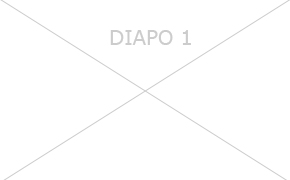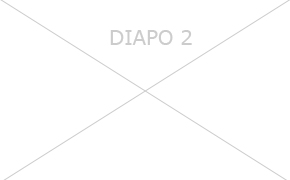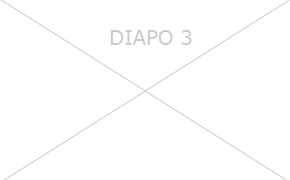General information
Organisation
The French Alternative Energies and Atomic Energy Commission (CEA) is a key player in research, development and innovation in four main areas :
• defence and security,
• nuclear energy (fission and fusion),
• technological research for industry,
• fundamental research in the physical sciences and life sciences.
Drawing on its widely acknowledged expertise, and thanks to its 16000 technicians, engineers, researchers and staff, the CEA actively participates in collaborative projects with a large number of academic and industrial partners.
The CEA is established in ten centers spread throughout France
Reference
2023-28512
Description de l'unité
CEA-Leti's mission is to contribute to technological innovation for clean and safe energy, health and well-being, sustainable transport, information and communications, space exploration, safety and security. Every day, this technological research institute works to bridge the gap between micro and nanotechnology research and industrial and consumer applications, with the aim of improving the quality of life for everyone. Based in Grenoble (38), Leti employs over 2,000 top-level researchers and has offices in the USA and Japan.
Within this institute, the Sensor Systems and Electronics for Energy Department (SSCE), through its Signals and Sensor Systems Laboratory (LSSC), is active in the field of sensor signal fusion via studies in signal processing, information processing, artificial intelligence (AI) and embedded algorithms.
Position description
Category
Mathematics, information, scientific, software
Contract
Internship
Job title
Optimal sensor placement for environmental monitoring of air pollution H/F
Subject
Air pollution in urban areas constitutes a major public health concern, with at least 238,000 premature deaths per year in Europe due to fine particles PM 2.5 . At the city or district level, it is necessary to better estimate and predict the levels of pollution citizens are exposed to. Current measurement resources consist of a small number of fixed stations, whose measurements are assimilated into a simplified model of the city (street network). In recent years, the miniaturization of sensors has progressed considerably, and it has become realistic to design estimation approaches based on a large number of sensors scattered in the environment (crowdsensing), for example, the estimation of pollution sources in an urban environment.
The question is: where should the sensors be placed in a city district to maximize the estimation quality?
Contract duration (months)
6
Job description
Previous work has considered the assimilation of measurements from a network of low-cost fixed sensors for estimating air pollution sources in urban environments [1,2]. The geometry of buildings results in a very heterogeneous domain, with complex boundary conditions [3]. We have developed a reduced finite-difference approach supported by radial basis functions for an advection-diffusion partial differential equation (PDE) model of atmospheric dispersion.
Various sensor placement approaches exist in the literature. For the most part, they are methods developed specifically for a given application, exploiting the spatial concentration gradient and knowledge of the local wind field. For infinite-dimensional systems described by partial differential equation (PDE) models, promising approaches have been proposed [4,5,6].
The aim of the internship is to develop a generic approach to optimal sensor placement in the context of atmospheric dispersion of pollutants in urban areas. This approach will be developed on simplified 2D/3D case studies, and tested on a city district in Grenoble and/or Paris [3].
[1] R. Lopez-Ferber, S. Leirens, D. Georges, “Source Estimation: Variational Method versus Machine Learning Applied to Urban Air Pollution”, IFAC Workshop on Control for Smart Cities, CSC 2022
[2] R. Lopez-Ferber, D. Georges, S. Leirens, “Fast Estimation of Pollution Sources in Urban Areas Using a 3D LS-RBF-FD Approach”, submitted to the European Control Conference 2024
[3] M. Mendil, S. Leirens, P. Armand, C. Duchenne, “Hazardous atmospheric dispersion in urban areas: A Deep Learning approach for emergency pollution forecast”, Environmental Modelling & Software, Volume 152, 2022
[4] D. Georges, “Optimal Location of Mobile Sensors for Environmental Monitoring”, European Control Conference (ECC), July 17-19, 2013, Zürich, Switzerland
[5] D. Georges, “Optimal Location of a Mobile Sensor Continuum for Environmental Monitoring”, 1st IFAC Workshop on Control of Systems Governed by Partial Differential Equations, September 25-27, 2013, Paris, France
[6] VT Nguyen, D. Georges, G. Besançon, “Optimal sensor location for overland flow network monitoring”, 3rd Conference on Control and Fault-Tolerant Systems, Barcelona, Spain, Sept. 7-9, 2016
Methods / Means
Python programing, ARIA Impact 3D
Applicant Profile
Profile:
- Applied mathematics profile
- with a taste for physical models and numerical methods
Skills:
- PDE models, optimal control, optimization
- Python programming
- Autonomy and adaptability
- Good writing skills
Position location
Site
Grenoble
Job location
France, Auvergne-Rhône-Alpes, Isère (38)
Location
Grenoble
Candidate criteria
Prepared diploma
Bac+5 - Master 2
Recommended training
Applied mathematics
PhD opportunity
Oui
Requester
Position start date
20/09/2023

 Je me crée un espace candidat
Je me crée un espace candidat






